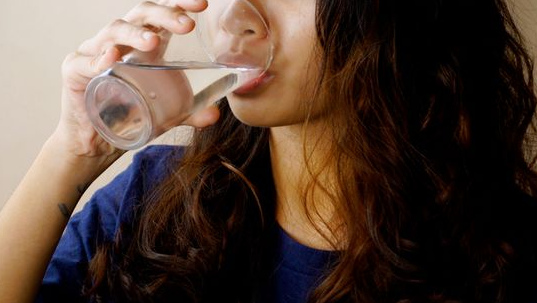Looking for a quick and effective solution to alleviate nasal congestion? Consider making your own Homemade Nasal Rinse For Immediate Relief. Nasal rinsing is a natural and soothing way to clear out nasal passages, providing instant comfort from congestion and sinus pressure. By using simple ingredients found at home, you can create a gentle and effective nasal rinse to help you breathe easier and feel better.
Saline Solution
Using saline solution for nasal rinse is a simple and effective way to help you manage common cold and allergy symptoms. It also helps your nose to stay moisturized. Besides, it may prevent infection.

You can make your own saline solution. To make your own, you’ll need distilled water, a pinch of baking soda, and salt. These three ingredients should be mixed well and stored in an airtight container.
In addition to using saline solution for nasal rinse, you can also use it to clean your eye drops and contact lenses. It can even be used to treat wounds. But before you start using it, consult your doctor to ensure that it’s safe for you.
Whenever you use saline solution for nasal rinse, be sure to keep it at room temperature. Otherwise, you risk a serious infection. This is because the water is not filtered, and bacteria could live in it.
Another thing to remember is that you should not use saline solution for nasal rinse if you’re suffering from respiratory illnesses, including asthma. The water could be contaminated with bacteria or amoebas.
Also, if you want to make your own saline solution, avoid using too much salt. Salt can be painful to your skin and can sting open wounds. Make sure to follow directions on the package.
If you want to use saline solution for nasal rinse, start by tilting your head to the left. Next, squeeze a small amount of saline solution into your right nostril. When you draw the solution out of your other nostril, the saline should flow out of the other.
Finally, be careful not to get the saline solution into your mouth. After you’ve sucked the solution out, try to blow your nose to get rid of any mucus that may have been left behind.
Neti pot
A homemade nasal rinse is a very simple way to help relieve your sinus symptoms. It’s also easy to make, inexpensive, and may even help you address a sinus infection.
To make a homemade nasal rinse, you’ll need a clean, dry Neti Pot, some lukewarm water, and some salt. For example, you can mix up to 1/2 teaspoon of coarse non-iodized salt with four ounces of lukewarm water.

The saline solution you make will help to soothe your mucus membranes. It can also improve the coordination of your cilia. Cilia are tiny structures inside your nasal passages that push the mucus to the back of your throat. They can also remove allergens and irritants.
Before making your saline solution, you’ll need to clean your nasal passages with distilled or sterilized water. You can get this type of water from a store or at home.
Once you’ve cleaned your nasal passages, you’re ready to prepare your saline solution. Make sure you use a quality solution and don’t make your saline solution too salty.
When you’re ready to use your homemade solution, tilt your head slightly to the side. This will allow gravity to carry the liquid through your sinuses. While doing so, breathe deeply through your mouth.
You’ll soon feel your sinuses start to drain. If you notice any leaking or any signs of irritation, you should stop and consult with your physician.
You’ll also want to check your Neti pot for leaks or to make sure you have the proper angle. If you don’t, you could be pushing the saline solution through your throat instead of your nose.
Using a neti pot regularly will help to keep your sinuses healthy. But you should follow the directions carefully to avoid irritation or infection.
Waterpik: Homemade Nasal Rinse For Immediate Relief
If you’re looking for immediate relief from nasal congestion and other sinus symptoms, you may be interested in a homemade nasal rinse. Using a saline solution can help improve the function of your cilia, the tiny hair-like structures in your nasal passages that aid in the clearing of mucus.
It’s a good idea to check with your health care provider before attempting a nasal rinse of any kind. They can determine if you’re at risk for a serious infection or whether or not you have a sinus problem.
You can use a saline sinus rinse to improve your nasal medications and remove allergens. There are a number of commercially available options that you can purchase without a prescription.

The Waterpik is a laudable dental device that delivers a stream of high-pressure water to clean your teeth. A variety of models are available, so it’s best to talk with a hygienist to find the best one for you. Several dentists have used Waterpik to remove bacteria from deep dental pockets.
In addition to helping to clear your nasal passages, a saline solution helps keep the mucous membranes moist and nourished. The solution can be applied over the sink or while you’re taking a shower.
While you’re at it, be sure to clean your irrigation equipment carefully. Your bulb syringe and the spout should be cleaned and rinsed with dishwashing detergent to help prevent the buildup of bacteria.
For the most part, a saline rinse is a safe and effective way to alleviate nasal congestion. However, you should never try a saline solution if you’re suffering from a severely blocked nasal passageway.
As you can see, a saline sinus rinse is an effective and easy way to achieve immediate relief from nasal congestion.
Hand technique (alternate technique)
If you’re looking for a fast remedy for your runny nose, there are a few different options you can use. There’s the “Hand Technique”, which uses saltwater, and the “Waterpik Technique” that uses a sinus irrigation tip. Before you try any of these, it’s a good idea to ask your doctor or health care provider which method is best for you. You may also want to consult a nurse for guidance. They can tell you which technique will be most beneficial for you, and how to prepare it.
In addition to the Hand Technique, you can use a syringe with a tip inserted inside your nostril. Most pharmacies carry this device, or you can make your own syringe. Fill the syringe with a solution of water and a coarse, non-iodized salt. Try to keep the tip of the syringe inside your nostril, and make sure the tip doesn’t go into your mouth. Once the solution is in your ear, blow the syringe lightly to remove it.
The Waterpik Technique has the added advantage of allowing you to rinse your other nostril as well. This is a good option if you have small children, since they can be difficult to hold still.
Avoiding triggers for allergies
Allergies can be very annoying, but there are some things you can do to ease the symptoms. For example, avoiding triggers for allergies is a great first step. You can do this by minimizing your exposure to the allergens that make you sneeze, runny nose, or cough.

In addition, there are several other ways you can reduce the chances of your having an allergic reaction. For example, you can use a nasal rinse to keep the pollen out of your nasal passages. Or, you can wash the insides of your mouth with water that has been boiled and cooled. If you suffer from a severe allergy, you may want to see an allergist for further assistance. Getting allergy shots is another method of reducing your immune system’s reaction to allergens.
Another option is to make your own homemade nasal spray. You can mix a mixture of cooled water, baking soda, and salt and use this as a saline spray. The result is an inexpensive, saline solution that will help you avoid an allergic reaction. Use this treatment as needed, and you’ll likely be able to reduce the amount of allergy medication you use.
